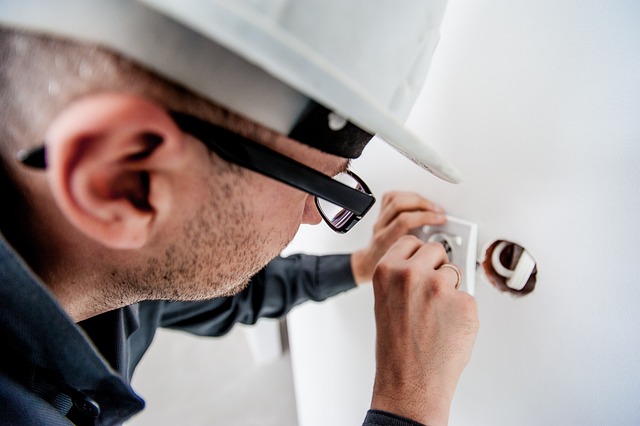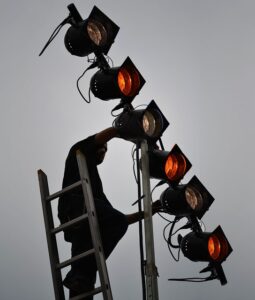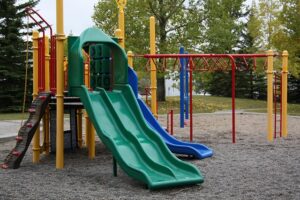Lifecycle Management of Electrical Components: Switches, Receptacles, and Outlets by Professional Electricians
residential and commercial electrical systems require regular inspection and maintenance by professional electricians to ensure safety and functionality. Switches, receptacles, and outlets can wear over time due to frequent use, and should be evaluated for signs of aging, malfunction, or damage. An…….

residential and commercial electrical systems require regular inspection and maintenance by professional electricians to ensure safety and functionality. Switches, receptacles, and outlets can wear over time due to frequent use, and should be evaluated for signs of aging, malfunction, or damage. An electrician is crucial for addressing issues like degradation, which can increase fire risks and cause safety hazards. It's important to consult an electrician at the first sign of trouble, such as discoloration, excessive heat, or sparks. Regular professional maintenance by certified electricians not only extends the lifespan of these components but also helps in preventing electrical malfunctions that could affect connected devices and pose safety risks. Timely and expert repairs or replacements can optimize your entire electrical infrastructure's performance, ensuring it operates safely and efficiently.
When it comes to maintaining the integrity of your home’s electrical system, understanding the lifecycle of switches, receptacles, and outlets is crucial. As these components age or face wear and tear, their performance can diminish, leading to potential safety hazards. This article delves into the intricacies of identifying when it’s time for repairs or replacements, emphasizing the role of professional electricians in ensuring your electrical system functions safely and efficiently. From discerning signs of distress to selecting the ideal switches and receptacles for your home, we cover a comprehensive range of topics, including DIY vs. professional repair considerations, safety precautions, cost implications, and energy efficiency upgrades. Additionally, we explore the importance of regular maintenance and smart switch options that can enhance both safety and convenience in modern homes. Whether you’re troubleshooting an issue or planning a complete system overhaul, this guide provides valuable insights for homeowners and property managers alike, ensuring your electrical system remains reliable and up to code.
- Understanding the Lifecycle of Electrical Components: Switches, Receptacles, and Outlets
- Signs That Indicate It's Time to Repair or Replace Your Electrical Outlets
Understanding the Lifecycle of Electrical Components: Switches, Receptacles, and Outlets

When addressing electrical issues within a residential or commercial setting, understanding the lifecycle of switches, receptacles, and outlets is crucial for maintaining safe and efficient power distribution. Switches, which control the flow of electricity to fixtures such as lights and fans, typically have a long lifespan but can wear out over time due to frequent use or suboptimal installation practices. It’s advisable to consult with a professional electrician when noticing signs of aging or malfunctioning switches, as these can pose fire risks if not addressed promptly.
Receptacles, on the other hand, are subject to various forms of stress from the insertion and removal of plugs, surges, and fluctuations in electrical demand. An electrician can assess the condition of your receptacles, ensuring they meet safety standards and function properly. Similarly, outlets, which often serve as the final point of power delivery within a structure, must be regularly inspected to ensure they are not overloaded or damaged. A qualified electrician is equipped to replace outlets that no longer perform optimally, thus preventing potential hazards and ensuring continuous power supply to your devices. Regular maintenance by a skilled electrician plays a pivotal role in extending the lifecycle of these components, enhancing safety, and improving the overall functionality of your electrical system.
Signs That Indicate It's Time to Repair or Replace Your Electrical Outlets

When household electrical outlets start showing signs of wear or malfunction, it’s crucial to determine whether a repair or replacement is necessary. A qualified electrician can assess the situation and provide professional guidance. Common indicators that your outlets may require attention include discoloration or charring around the outlet, which can signal overheating and potentially serious electrical issues. If an outlet feels warm to the touch or sparks when you insert a plug, immediate action is needed. Additionally, if devices consistently stop working when plugged into a particular outlet but function fine when connected elsewhere, this points to an issue with that outlet. It’s important to address these symptoms promptly, as they can pose a fire risk and compromise the safety of your home’s electrical system. An electrician will inspect for loose connections or wiring damage, which might be resolved with a simple fix. However, if the outlet is beyond repair due to aging, repeated issues, or incompatibility with modern electrical demands, replacement will be the recommended course of action. Regular maintenance by a professional electrician can prevent such problems and ensure your electrical system operates efficiently and safely.
When addressing issues with switches, receptacles, and outlets, a careful approach is key. As detailed in this article, understanding the typical lifecycle of these components is crucial for homeowners and professionals alike. Regular maintenance and timely repairs or replacements by a skilled electrician can ensure electrical safety and efficiency within your home. Should you encounter flickering lights, loose outlets, or consistent tripping of circuits, it’s an indication that action is needed. By heeding these signs early, you can prevent more significant problems and protect your property from potential electrical hazards. Always rely on the expertise of a qualified electrician to handle such tasks, ensuring your home’s electrical system operates smoothly and securely.







